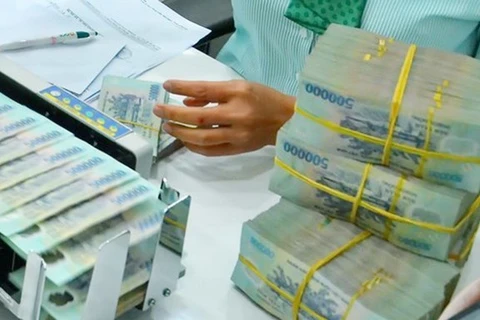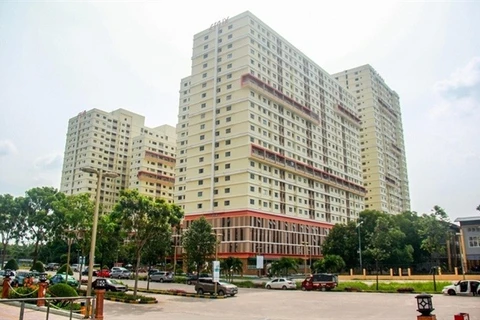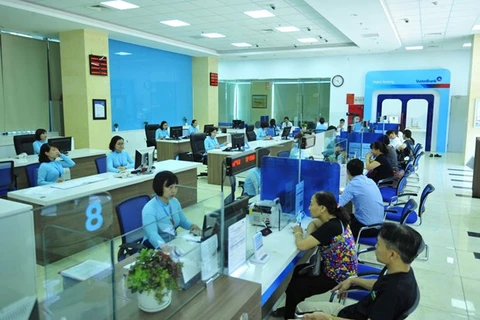Hanoi (VNA) – Vietnam would be in the grip of bad debts if the country does not have a professional debt trading market, according to insiders.
Despite the mounting amount of non-performing loans, there are very few companies specialising in trading debts, including two state-owned asset management companies namely the Vietnam Asset Management Company (VAMC) and Debt and Assets Trading Company (DATC), and several debt trading firms.
For years, the only debt trading activity in Vietnam was between the commercial banks and VAMC, a state-owned buyer of bad debts.
According to Chief Economist at BIDV Can Van Luc, it is necessary to set up a debt trading market to engage more investors, both domestic and foreign players, who will speed up settlement of bad debts, thus contributing to the development of Vietnamese financial market, comprising bond and capital markets.
Meanwhile, Tran Du Lich, a member of the National Monetary and Financial Policy Advisory Council, said restructuring of commercial banks only helps prevent bank system collapse, and it does not work much in helping them clear non-performing loans.
Settlement of bad debts in commercial banks is just half of the way; therefore, a legal framework must be complete, particularly the establishment of a debt trading market, he stressed.
Financial institutions should stay prudent with restructured debts
Experts described banks’ selling of a huge amount of collaterals to recover debts as an opportunity to promote the development of a debt trading market.
Early this year, the State Bank of Vietnam issued Circular No.01/2020/TT-NHNN directing credit institutions and foreign bank branches to restructure the repayment periods, waive and reduce the interest rates and fees, maintain the debt classification to support customers affected by COVID-19 pandemic.
As of September 14, credit institutions restructured loan payment for over 271,000 customers, with total outstanding debt of 321 trillion VND, and lowered interest rate for nearly 485,000 customers with total outstanding debt of 1.18 quadrillion VND.
The central bank’s circular aims at saving lives of local businesses and making contributions to recovering the economy. However, experts said banks should stay prudent with the restructured loans.
According to economist Nguyen Tri Hieu, it would be more difficult to evaluate bad debt situation and commercial banks’ health since the COVID-19 pandemic has become more sophisticated.
In fact, there is an enormous amount of restructured debts, he said, adding if businesses fail to keep up the payments when Circular No.01 expires, banks will be wading through a flood of nonperforming loans. Without sufficient reserves, they will be in danger of becoming insolvent.
In a bid to control bad debts, experts suggested banks carry out careful examination, forecast risks, set aside rational reserves, and particularly avoid loosening lending standards.
Concerted efforts needed to keep NPLs ratio below 3 percent
The COVID-19 pandemic is weighing on the banking system’s non-performing loans (NPLs), requiring significant efforts to keep NPLs ratio below 3percent by the end of this year as targeted by the Government.
The increase in bad debts was unavoidable because of the pandemic. However, it was necessary to keep NPLs ratio at a reasonable level, Lich said, adding that bad debts would negatively affect credit flow.
According to the State Bank of Vietnam, the pandemic pushed up NPLs ratio. Statistics showed that on-balance sheet NPLs ratio was estimated at 1.8 percent at the end of June.
In the scenario that the gross domestic product (GDP) expanded at four percent this year, on-balance sheet NPLs ratio was forecast at 2.41 percent by the end of this year, 0.78 percentage point higher than the end of 2019. If GDP expanded at five percent this year, the ratio of on-balance sheet NPLs would be at 2.16 percent, 0.5 percent higher.
Experts predicted that the Government’s target of keeping bad debt ratio, including on-balance sheet NPLs of credit institutions, bad debts sold to the Vietnam Asset Management Company (VAMC) and debts that had implemented debt classification measures, below three percent would be challenging this year.
According to Do Hoai Linh, Director of the Finance and Banking Institute, the goal seemed impossible because COVID-19 was weighing on the socio-economic development. Linh predicted the NPLs ratio would be around four percent this year.
Can Van Luc from BIDV Training and Research Institute predicted on-balance sheet NPLs ratio at four percent, more than twice higher than the end of last year due to anticipated low credit growth and struggling business.
Luc said the total ratio of NPLs, including on-balance sheet, sold to VAMC and debts classified, could amount up to six percent of the total outstanding loans, 1.5 times higher than the end of 2019.
The central bank said that struggling business and production were affecting revenues and asset quality of credit institutions.
The banking sector was on the way to keeping NPLs ratio below 3 percent by the end of this year but the pandemic posed a significant challenge.
Global and domestic economic uncertainties, coupled with unpredicted development of African swine fever, natural disasters and diseases were also challenges in controlling bad debts.
As bad debts mainly stayed at weak credit institutions, the central bank said focus would be placed on restructuring these credit institutions following the market mechanism and the principle of ensuring rights of depositors and maintaining the system’s stability and safety.
On-balance sheet NPLs ratio has been kept at below three percent during the past four years, specifically 2.46 percent in 2016, 1.99 percent in 2017, 1.91 percent in 2018 and 1.63 percent in 2019./.

























